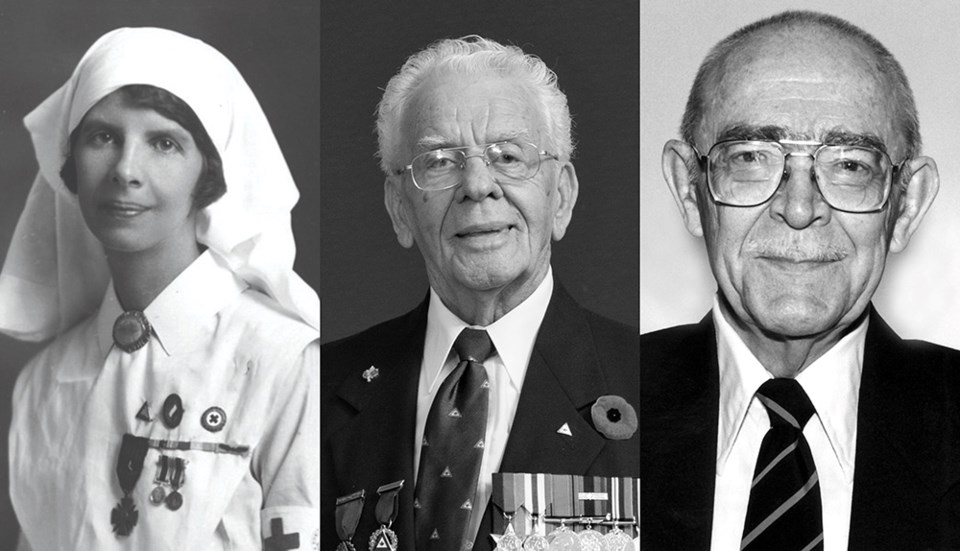Amid wars, countless Canadian soldiers and nurses have displayed extraordinary bravery and unwavering dedication, putting their lives on the line for our country.
Many of these individuals returned home bearing the profound physical and emotional scars of war, having lost limbs in the line of duty. Their experiences as amputees not only shaped their own lives but, as members of The War Amps of Canada, they left a lasting legacy on generations of amputees to come.
During the First World War, Madeleine Jaffray (1889-1972), served as a nurse in a military hospital near Bordeaux, France. The hospital where she was working was bombarded by German aviators and she was wounded in the foot by a piece of shrapnel from one of the bombs.
“I was coming out of a covered passage in one of the wards when a bomb fell right in front of me,” she said.
Her injury led to an amputation, making her Canada’s only female war amputee of the First World War.
Jaffray was awarded the Croix de Guerre by the French military for her bravery, with an additional star for her services. She also became the only female member of The War Amps at the time, an organization started by amputee veterans of the First World War to provide each other with the support needed to adapt to their new reality.
It was amputees like Jaffray who welcomed the new contingent of amputee veterans following the Second World War, sharing with them all that they had learned.
One of these was Mike Krulicki (1925-2020), who was just a teenager when he volunteered for service in the Second World War. He enlisted with the Irish Regiment of Canada, and in 1944, while fighting in the Italian Campaign as part of the attack on the Gothic Line, he stepped on a landmine and lost his right leg below the knee.
“Three nights before I stepped on the mine, I had the same identical dream: a ball of fire and me walking through it,” he said. “That happened three nights before I stepped on it. When I hit the mine, that’s all that seemed to hit my brain, was a ball of fire.”
In later years, The War Amps awarded Krulicki two of its most esteemed awards, the Distinguished Service Membership and Honorary CHAMP Membership, in recognition of his tireless work for the organization.
Another veteran was Arthur Johnson (1929-2006), who served with the Canadian Army Special Force as a mortar man with the Royal Canadian Regiment and joined 26,000 other Canadians in the fight for the freedom of South Korea.
In August 1952, on the day he was supposed to go home, he was delayed and found himself on Hill 355 near Seoul in the midst of intense enemy shelling. A mortar landed close by, wounding him and resulting in the loss of his right leg above the knee and damage to his right arm.
United by the common bond of amputation, amputees from the First World War, along with those from the Second World War and Korean War, were instrumental in pushing for advancements in prosthetic technology, confronting the stigma of disability, advocating for fair pensions for veterans and providing much-needed support to each other.
“These honourable individuals contributed their time to various activities of the association and shared their experiences as amputees with others, including modern-day veterans and children,” explained Rob Larman, a senior advisor at The War Amps and a leg amputee himself.
“The War Amps’ long history – stretching more than 100 years – is a testament to the tireless efforts of the members who built the association, and its many unique programs, from the ground up,” he added. “On Remembrance Day especially, but also throughout the year, we pay tribute to the sacrifice and service of all those who served and continue to serve.”




